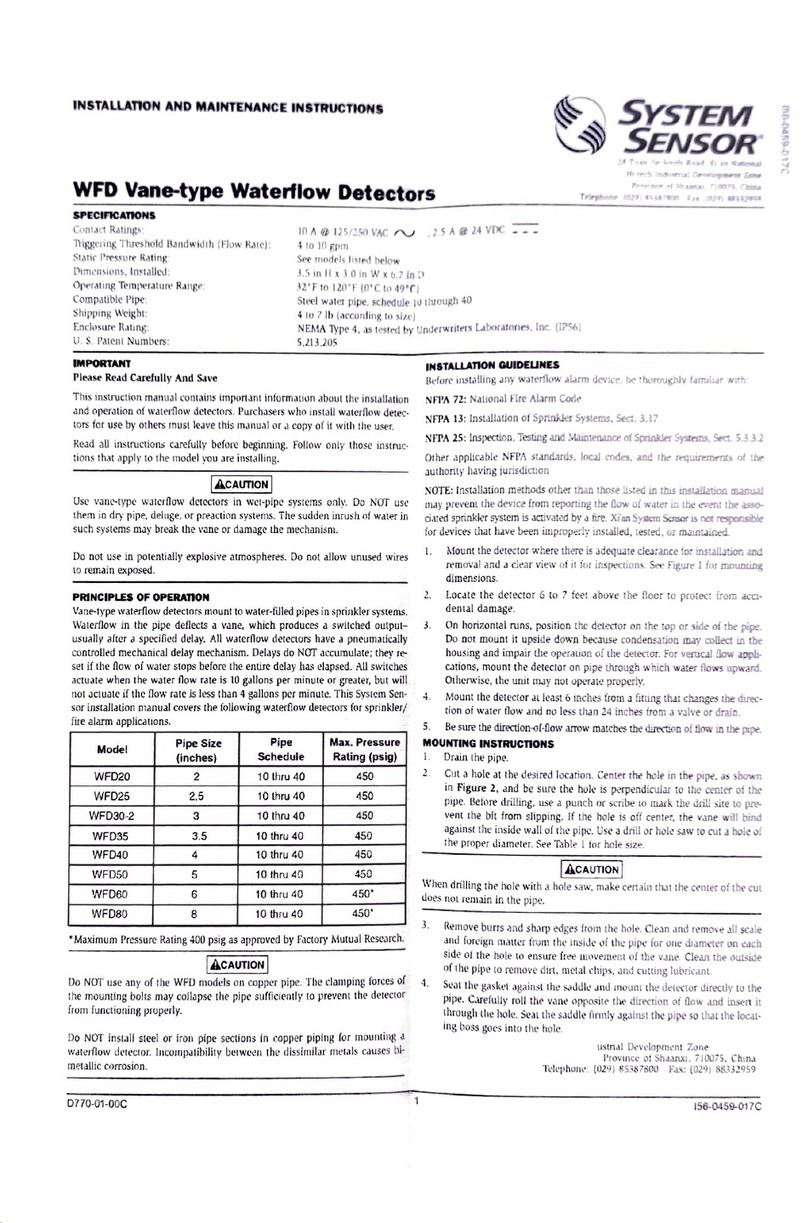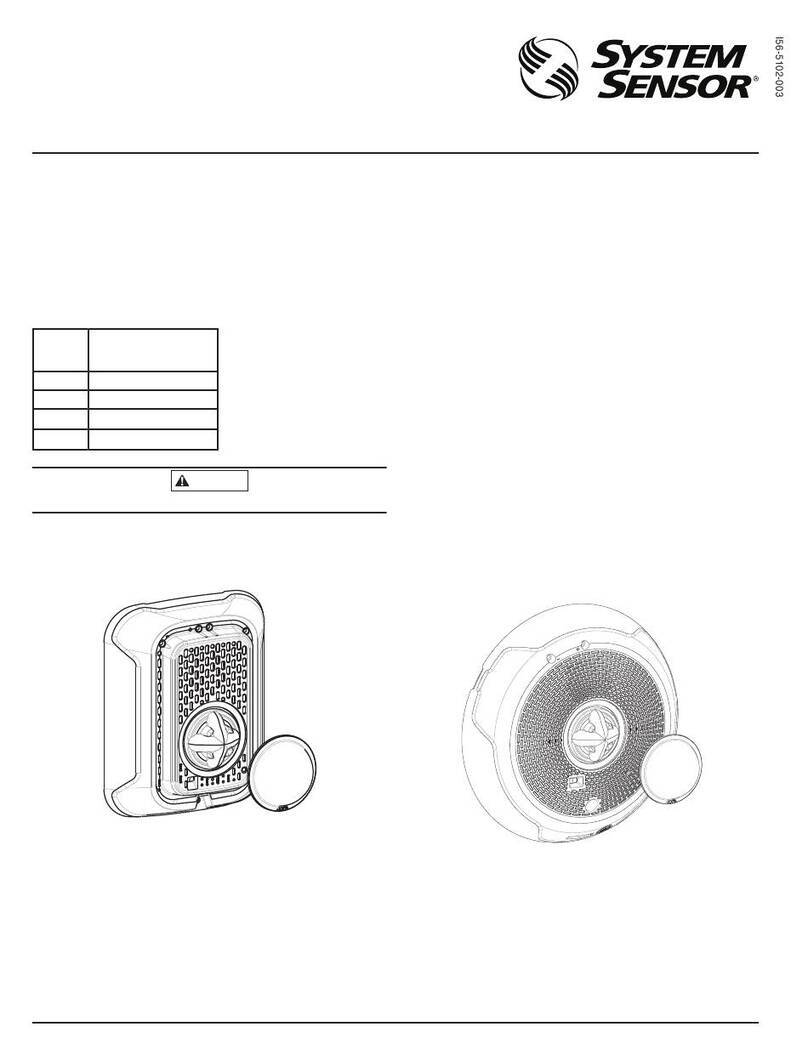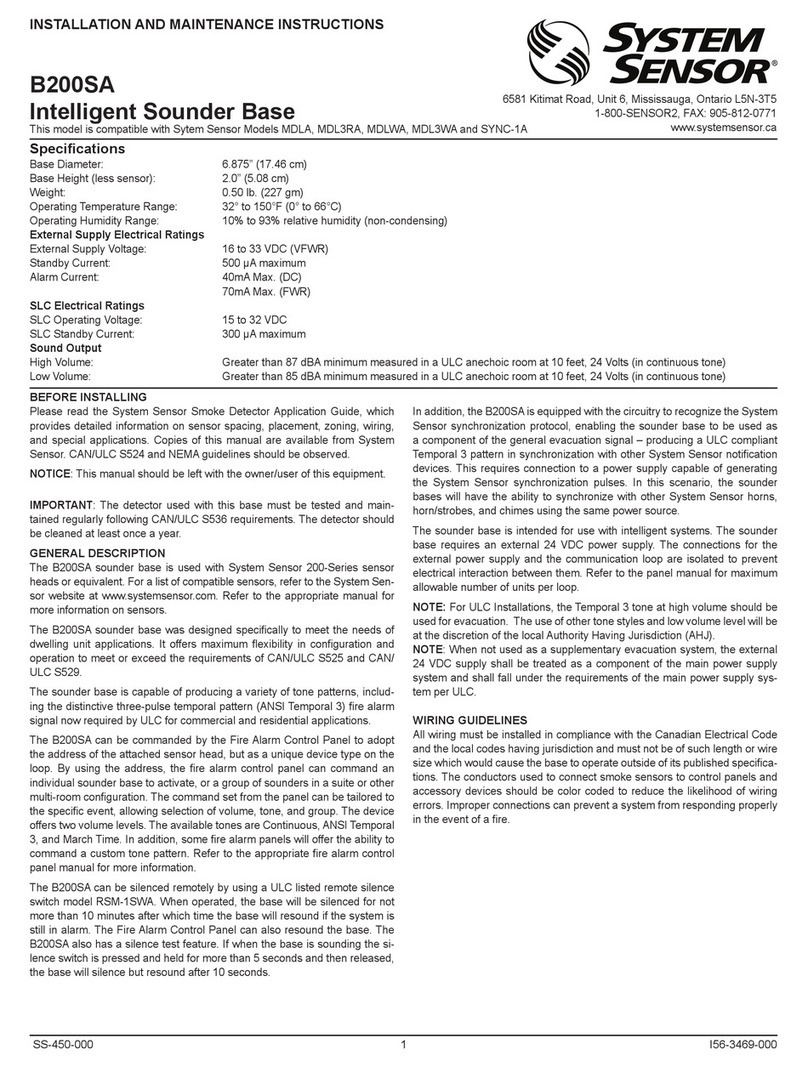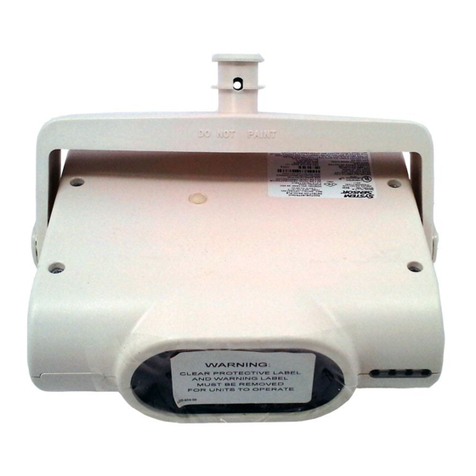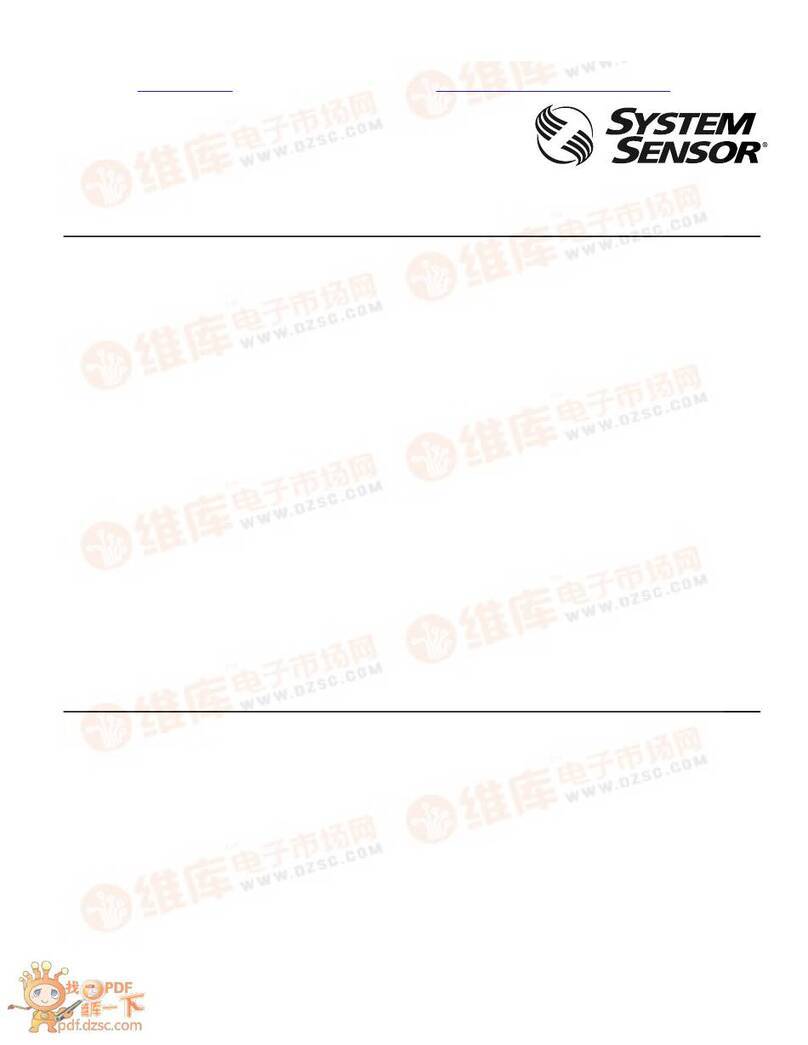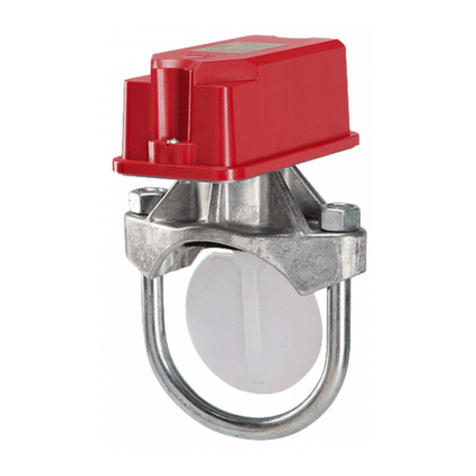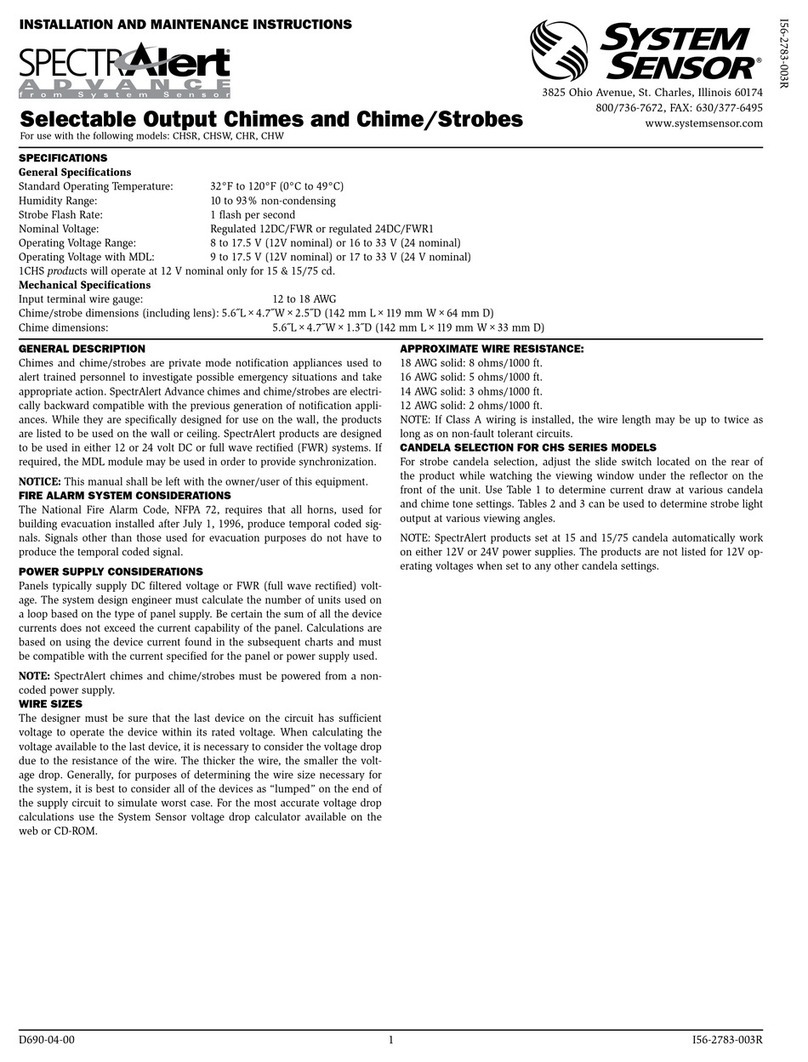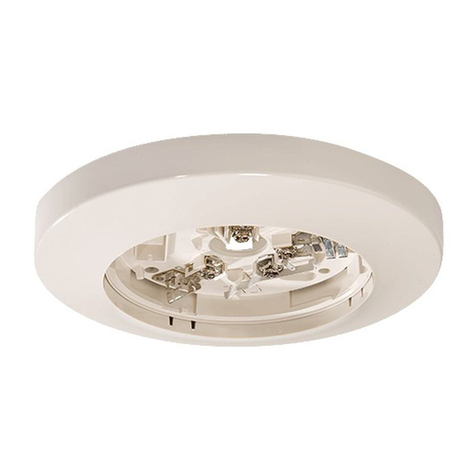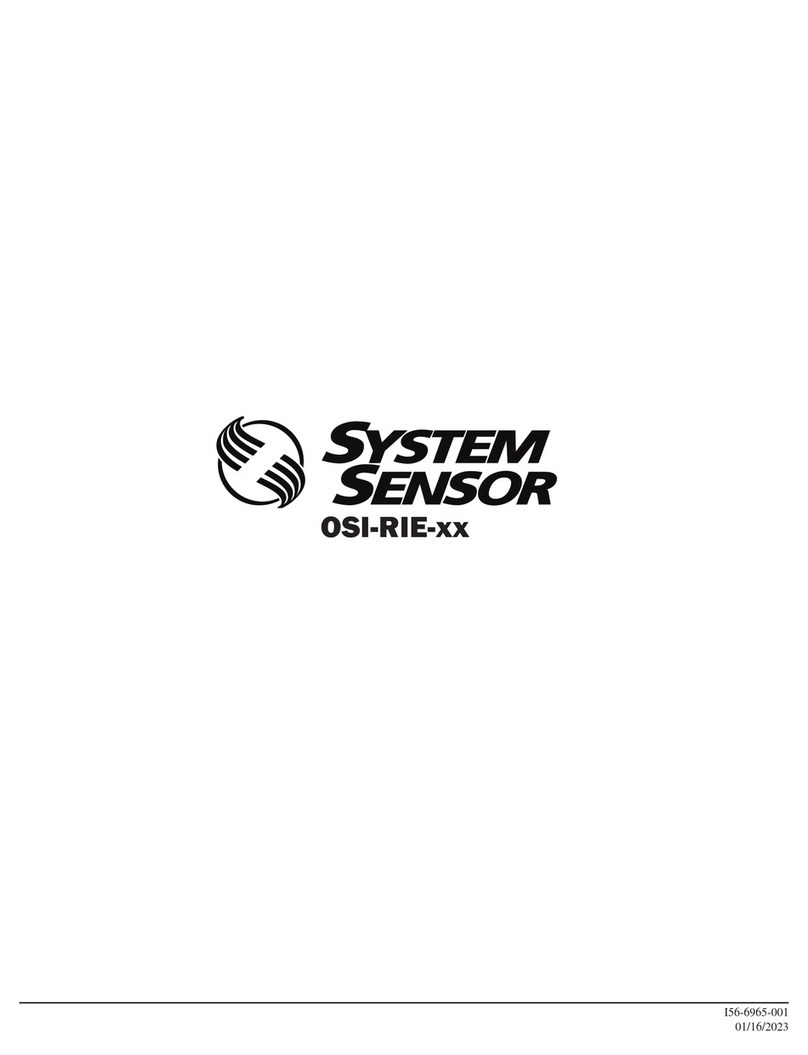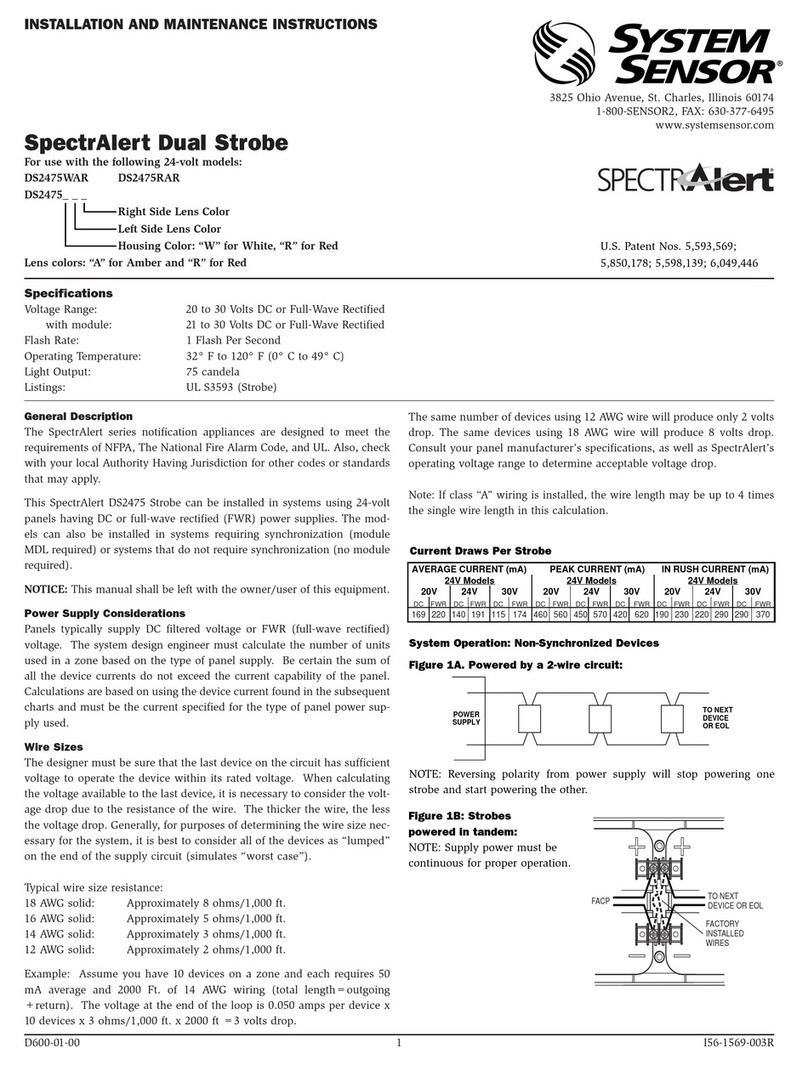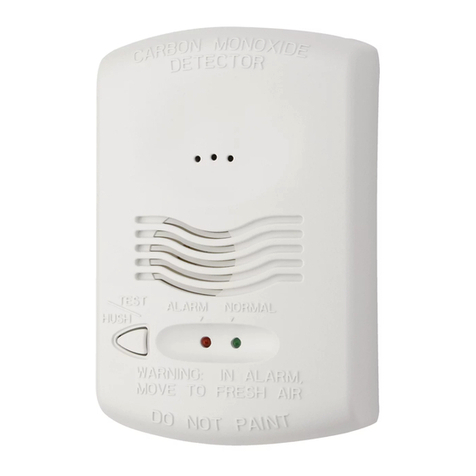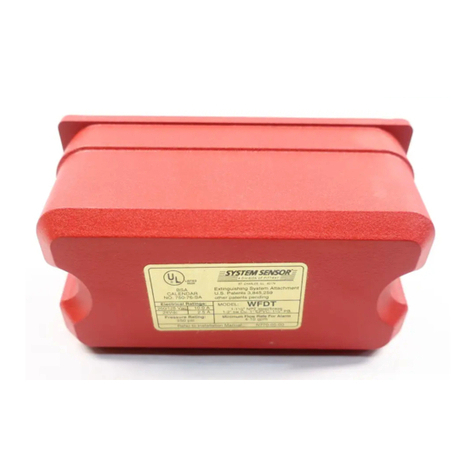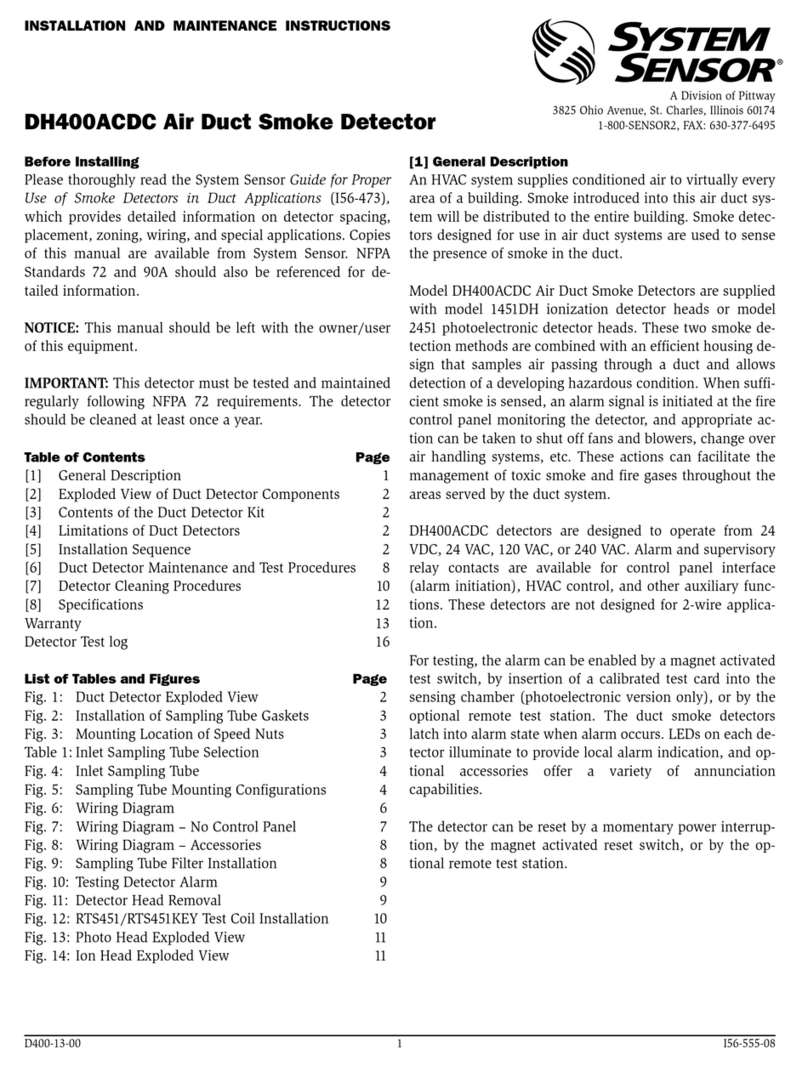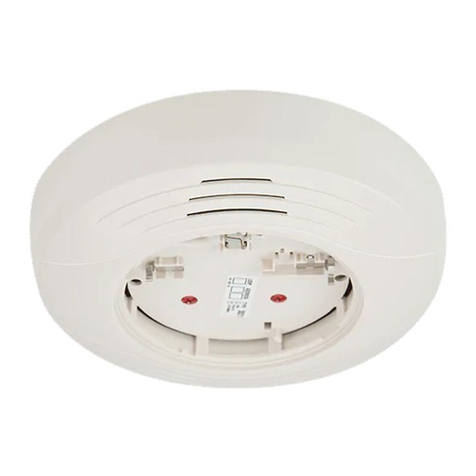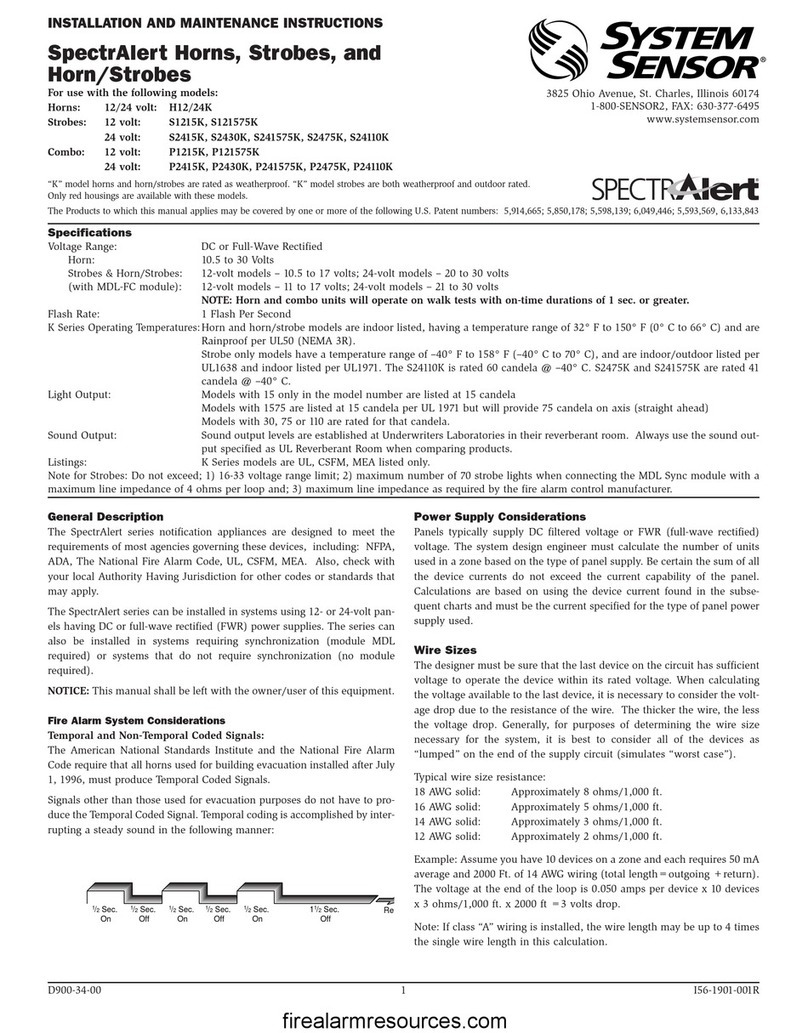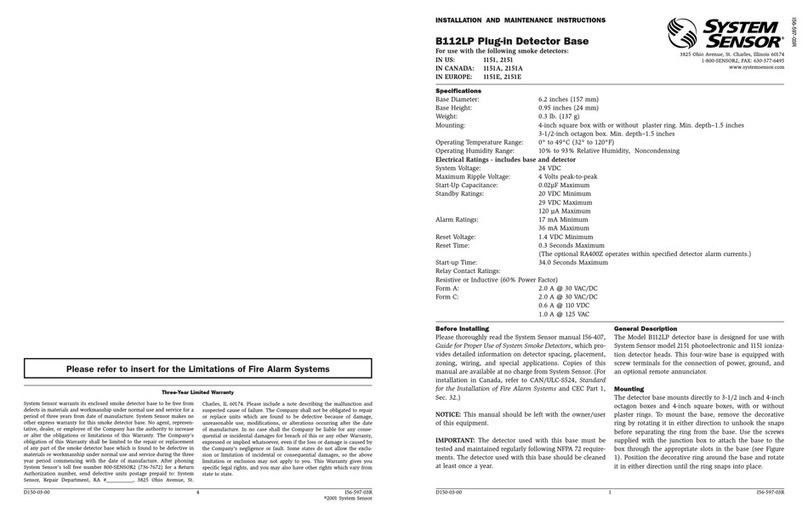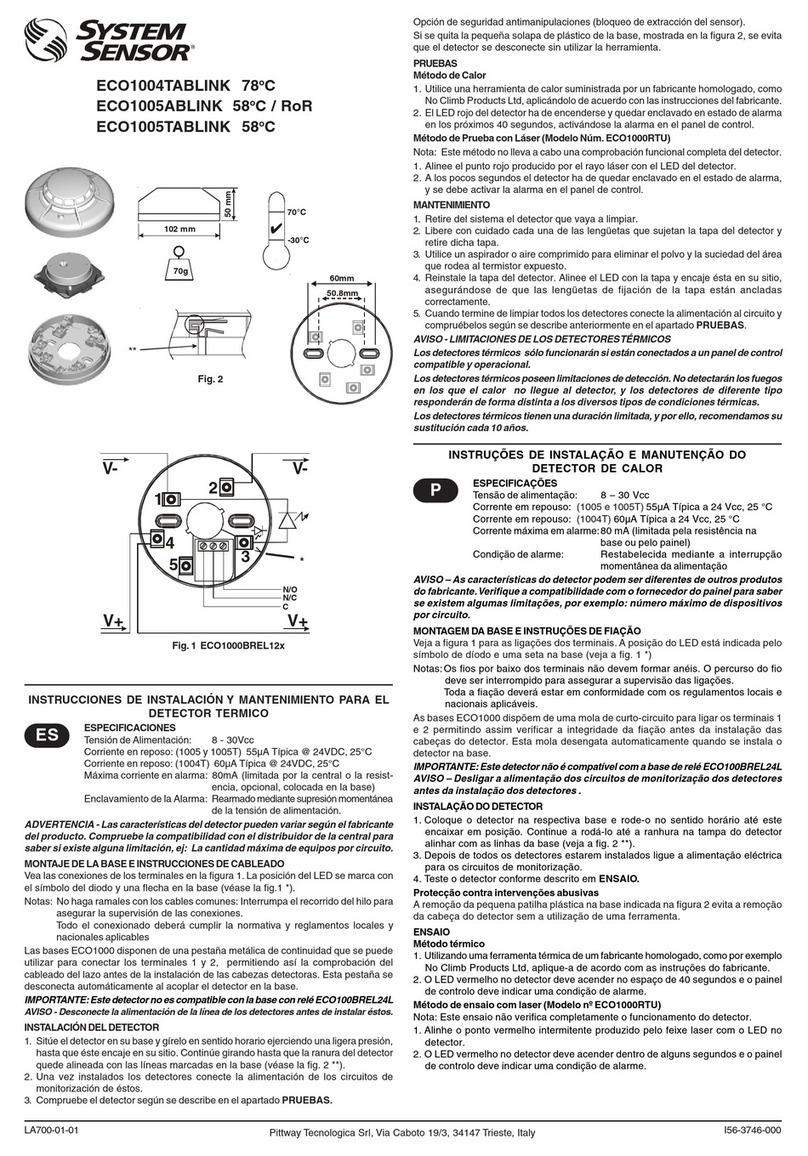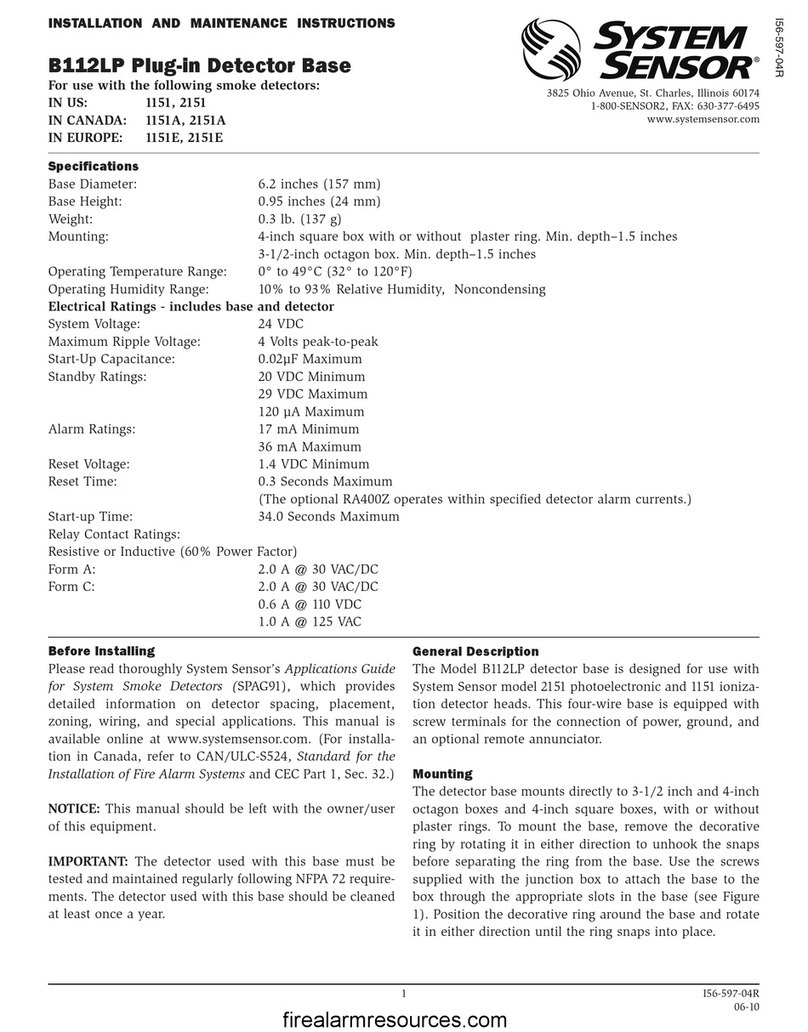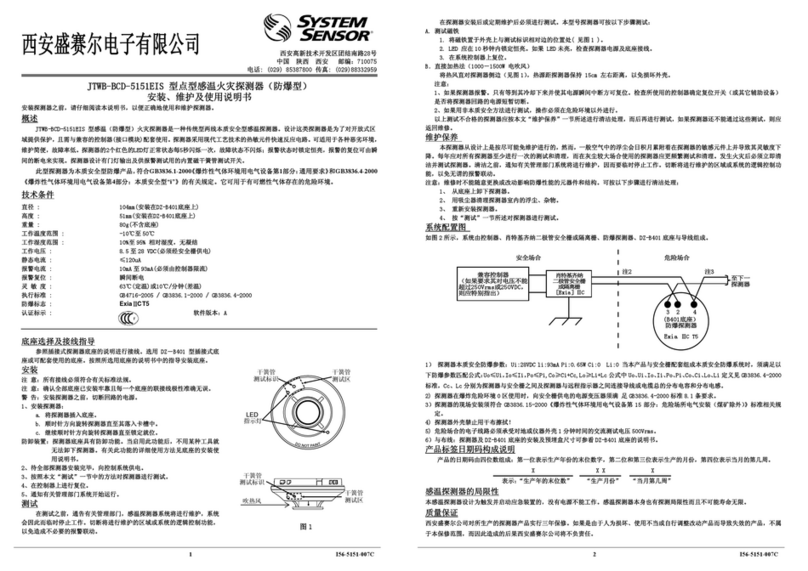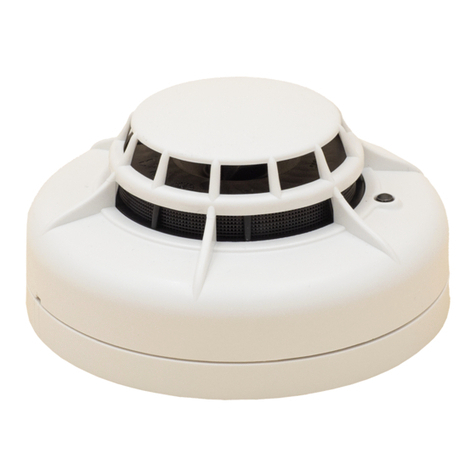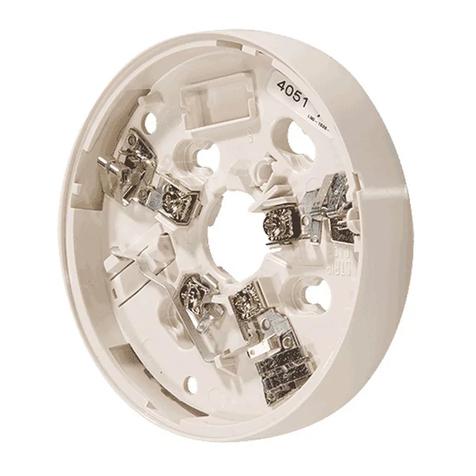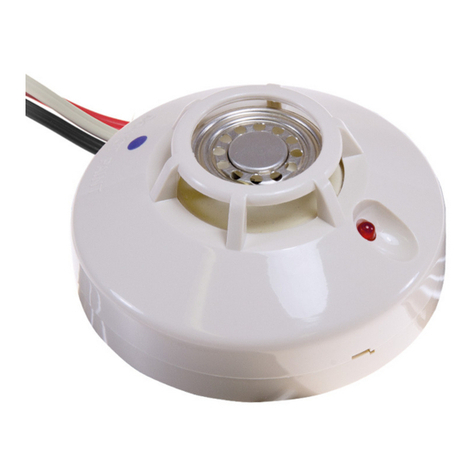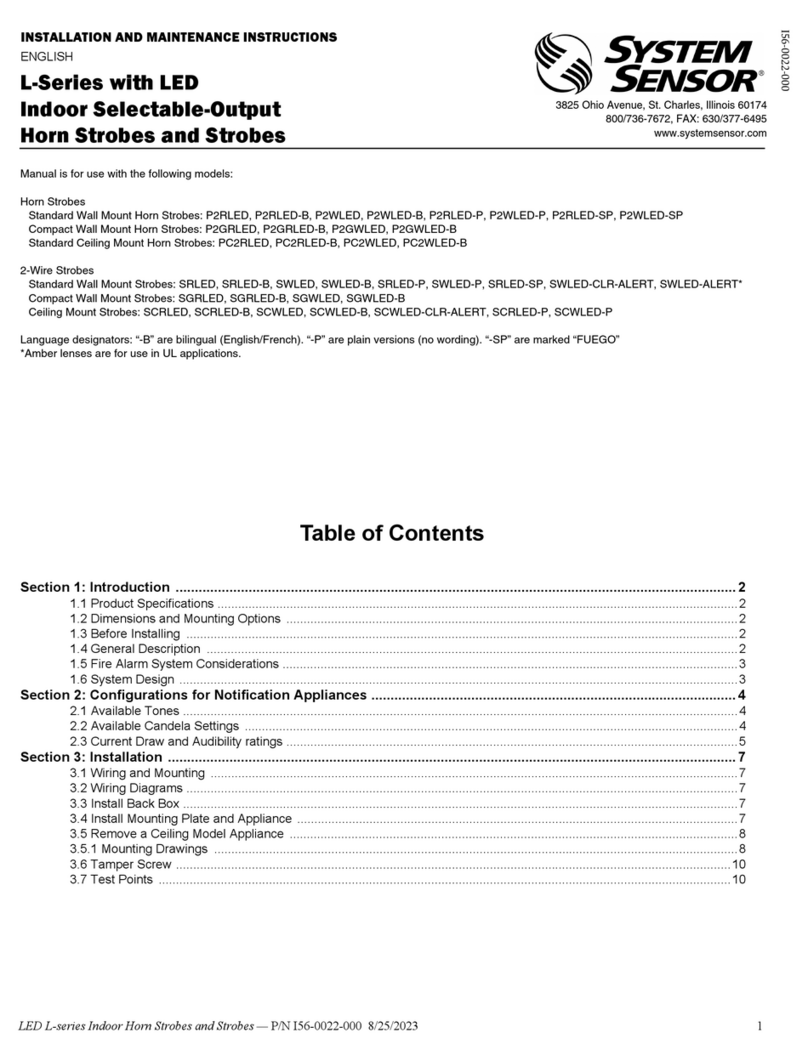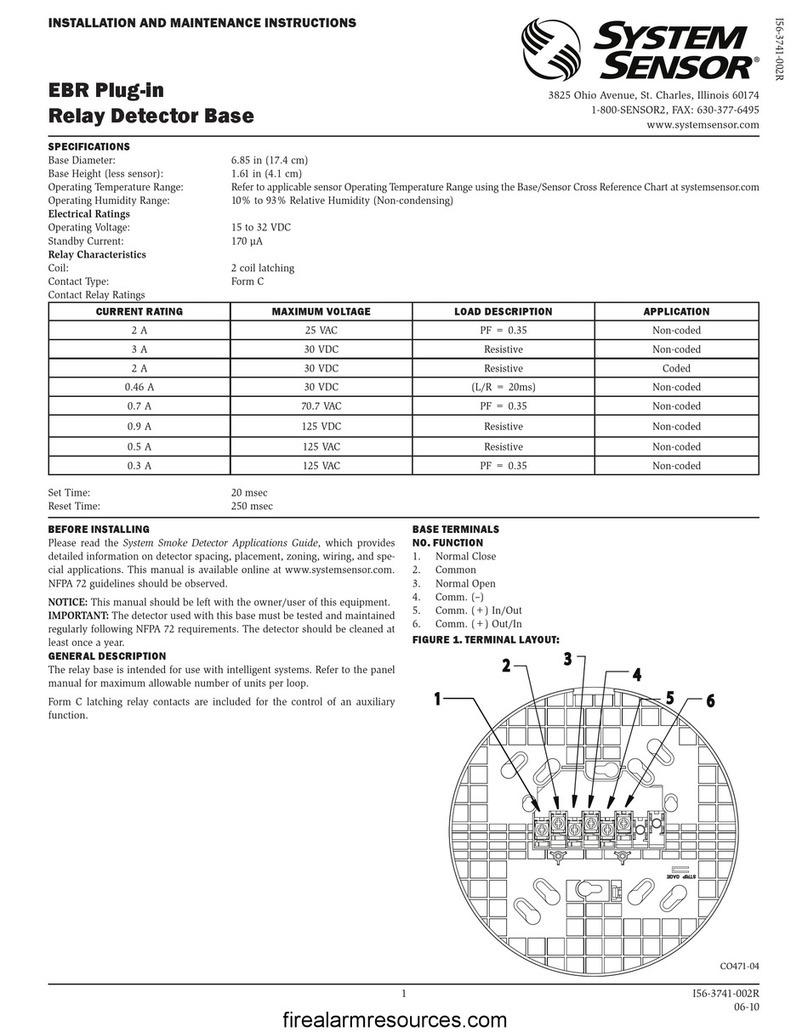
D150-05-00 REV #: 003 4 I56-1028-000
© System Sensor 1997
Three-Year Limited Warranty
System Sensor warrants its enclosed smoke detector base to be free
from defects in materials and workmanship under normal use and
service for a period of three years from date of manufacture. System Sen-
sor makes no other express warranty for this smoke detector
base. No agent, representative, dealer, or employee of the Company has
the authority to increase or alter the obligations or limitations of this War-
ranty. The Company’s obligation of this Warranty shall be limited to the
repair or replacement of any part of the smoke detector base which is
found to be defective in materials or work
manship under normal use and service during the three year period com-
mencing with the date of manufacture. After phoning System Sensor’s toll
free number 800-SENSOR2 (736-7672) for a Return Authorization num-
ber, send defective units postage prepaid to: System Sensor, Repair De-
partment, RA #__________, 6581 Kitimat Rd., Unit #6, Mississauga, ON,
L5N 3T5. Please include a note describing the malfunction and suspected
cause of failure. The Company shall not be obligated to repair or replace
units which are found to be defective because of damage, unreasonable
use,modications,oralterationsoccurringafterthedateofmanufacture.
In no case shall the Company be liable for any consequential or incidental
damages for breach of this or any other Warranty, expressed or implied
whatsoever, even if the loss or damage is caused by the Company’s neg-
ligence or fault. Some legislations do not allow the exclusion or limitation
of incidental or consequential damages, so the above limitation or exclu-
sionmaynotapplytoyou.ThisWarrantygivesyouspeciclegalrights,
and you may also have other rights which vary under common law.
The smoke detector used with this base is designed to activate and ini-
tiate emergency action, but will do so only when it is used in conjunction
withanauthorizedrealarmsystem.This detectormust beinstalled in
accordance with CAN/ULC-S524.
Smoke detectors will not work without power. AC or DC powered
smoke detectors will not work if the power supply is cut off.
Smoke detectors will not sense res which start where smoke does
not reach the detectors.Smolderingrestypicallydonotgeneratealot
of heat which is needed to drive the smoke up to the ceiling where the
smoke detector is usually located. For this reason, there may be large
delaysindetectingasmolderingrewitheitheranionizationtypedetec-
tor or a photoelectric type detector. Either one of them may alarm only
afteraminghasinitiatedwhichwillgeneratetheheatneededtodrivethe
smoke to the ceiling.
Smokefromresinchimneys,inwalls,onroofsorontheothersideofa
closed door(s) may not reach the smoke detector and alarm it. A detector
cannotdetectaredevelopingonanotherlevelofabuildingquicklyorat
all. For these reasons, detectors shall be located on every level and in
every bedroom within a building.
Smoke detectors have sensing limitations, too. Ionization detectors
andphotoelectricdetectorsarerequiredtopassretestsoftheaming
and smoldering type. This is to ensure that both can detect a wide range
oftypesofres.Ionizationdetectorsofferabroadrangeofresensing
capabilitybuttheyaresomewhatbetteratdetectingfastamingresthan
slowsmolderingres.Photoelectricdetectorssensesmolderingresbet-
terthanamingreswhichhavelittle,ifany,visiblesmoke.Becauseres
develop in different ways and are often unpredictable in their growth, nei-
ther type of detector is always best, and a given detector may not always
provideearlywarningofaspecictypeofre.
In general, detectors cannot be expected to provide warnings for res
resulting from inadequate re protection practices, violent explosions,
escapinggaseswhichignite,improperstorageofammableliquidslike
cleaning solvents which ignite, other similar safety hazards, arson, smok-
ing in bed, children playing with matches or lighters, etc. Smoke detectors
used in high air velocity conditions may have a delay in alarm due to
dilution of smoke densities created by frequent and rapid air exchanges.
Additionally, high air velocity environments may create increased dust
contamination, demanding more frequent maintenance.
To keep your equipment in excellent working order, ongoing mainte-
nance is required per the manufacturer’s recommendations and ULC
standards. At a minimum, the requirements of the National Fire Alarm
Code, shall be followed. A preventative maintenance agreement should
be arranged through the local manufacturer’s representative. Though
smoke detectors are designed for long life, they may fail at any time.
Anysmokedetector,realarmequipmentoranycomponentofthat
system which fails shall be repaired or replaced as soon as possible.
The Limitations of Property Protection Smoke Detectors
